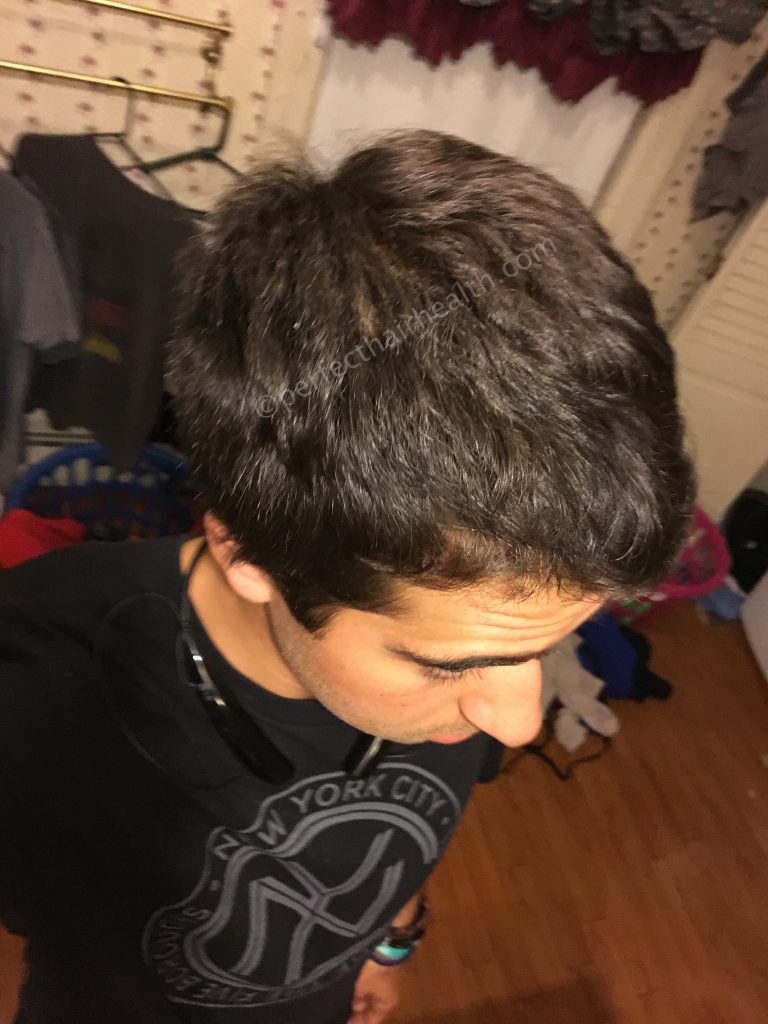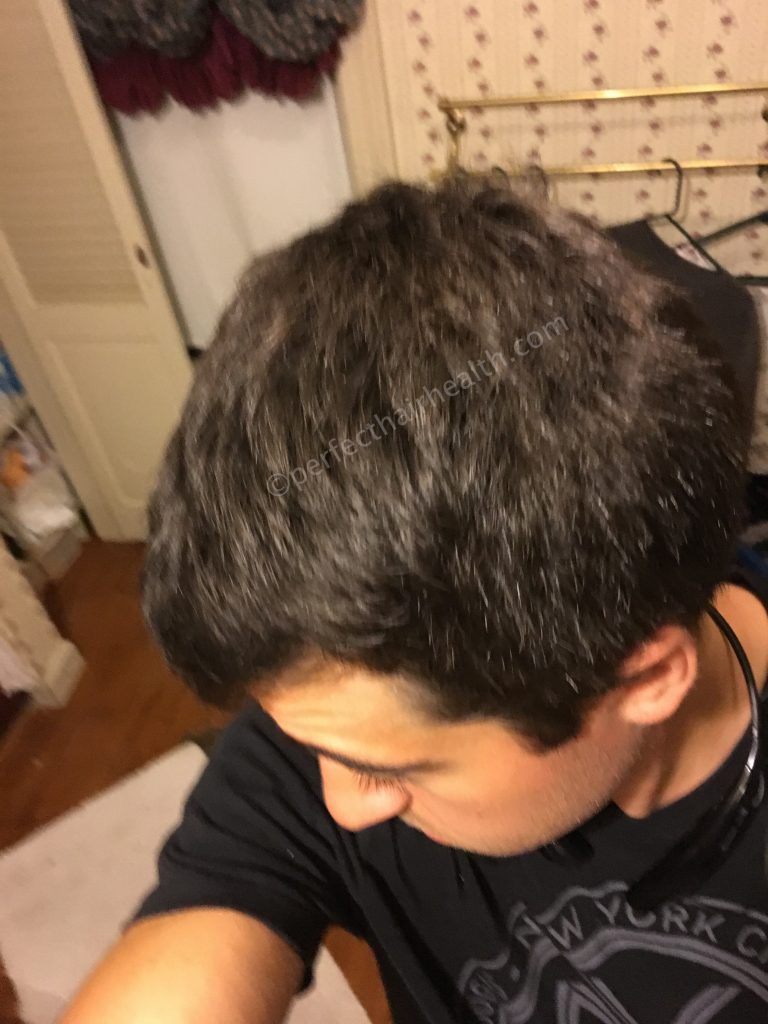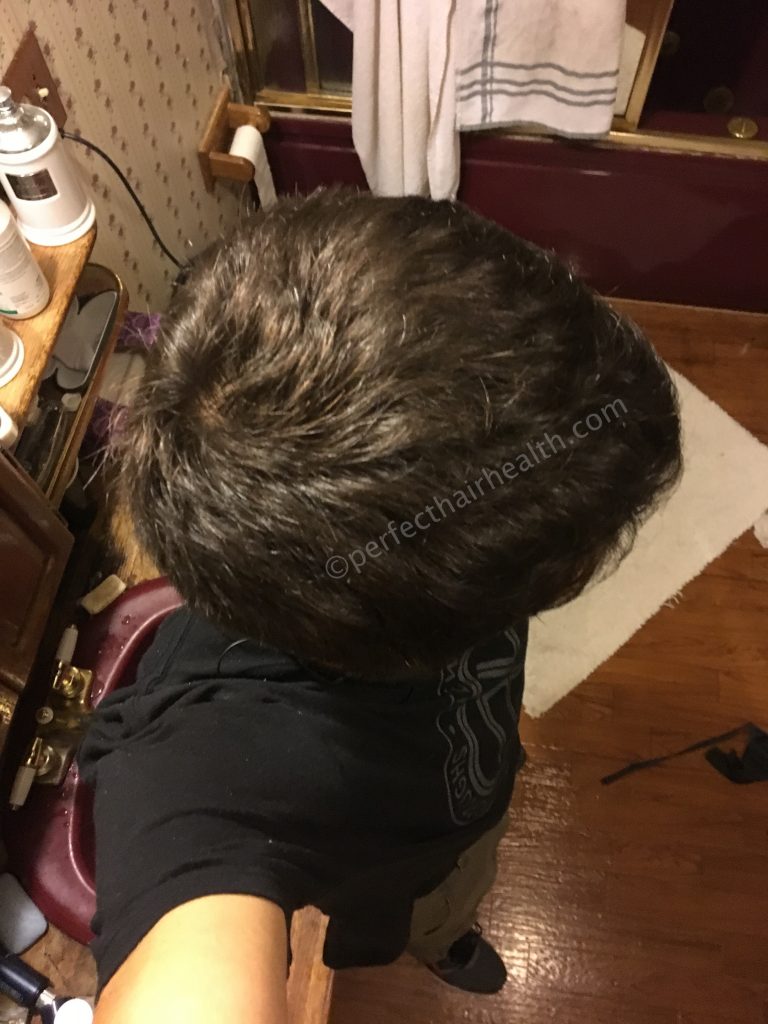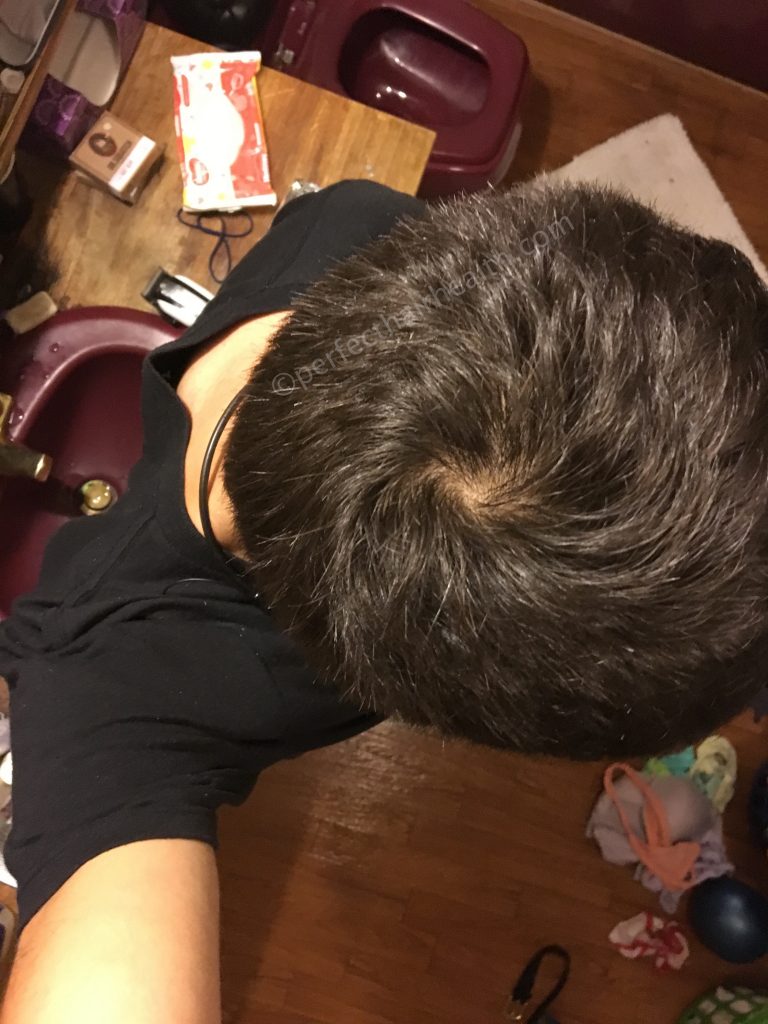- About
- Mission Statement
Education. Evidence. Regrowth.
- Education.
Prioritize knowledge. Make better choices.
- Evidence.
Sort good studies from the bad.
- Regrowth.
Get bigger hair gains.
Team MembersPhD's, resarchers, & consumer advocates.
- Rob English
Founder, researcher, & consumer advocate
- Research Team
Our team of PhD’s, researchers, & more
Editorial PolicyDiscover how we conduct our research.
ContactHave questions? Contact us.
Before-Afters- Transformation Photos
Our library of before-after photos.
- — Jenna, 31, U.S.A.
I have attached my before and afters of my progress since joining this group...
- — Tom, 30, U.K.
I’m convinced I’ve recovered to probably the hairline I had 3 years ago. Super stoked…
- — Rabih, 30’s, U.S.A.
My friends actually told me, “Your hairline improved. Your hair looks thicker...
- — RDB, 35, New York, U.S.A.
I also feel my hair has a different texture to it now…
- — Aayush, 20’s, Boston, MA
Firstly thank you for your work in this field. I am immensely grateful that...
- — Ben M., U.S.A
I just wanted to thank you for all your research, for introducing me to this method...
- — Raul, 50, Spain
To be honest I am having fun with all this and I still don’t know how much...
- — Lisa, 52, U.S.
I see a massive amount of regrowth that is all less than about 8 cm long...
Client Testimonials150+ member experiences.
Scroll Down
Popular Treatments- Treatments
Popular treatments. But do they work?
- Finasteride
- Oral
- Topical
- Dutasteride
- Oral
- Topical
- Mesotherapy
- Minoxidil
- Oral
- Topical
- Ketoconazole
- Shampoo
- Topical
- Low-Level Laser Therapy
- Therapy
- Microneedling
- Therapy
- Platelet-Rich Plasma Therapy (PRP)
- Therapy
- Scalp Massages
- Therapy
More
IngredientsTop-selling ingredients, quantified.
- Saw Palmetto
- Redensyl
- Melatonin
- Caffeine
- Biotin
- Rosemary Oil
- Lilac Stem Cells
- Hydrolyzed Wheat Protein
- Sodium Lauryl Sulfate
More
ProductsThe truth about hair loss "best sellers".
- Minoxidil Tablets
Xyon Health
- Finasteride
Strut Health
- Hair Growth Supplements
Happy Head
- REVITA Tablets for Hair Growth Support
DS Laboratories
- FoliGROWTH Ultimate Hair Neutraceutical
Advanced Trichology
- Enhance Hair Density Serum
Fully Vital
- Topical Finasteride and Minoxidil
Xyon Health
- HairOmega Foaming Hair Growth Serum
DrFormulas
- Bio-Cleansing Shampoo
Revivogen MD
more
Key MetricsStandardized rubrics to evaluate all treatments.
- Evidence Quality
Is this treatment well studied?
- Regrowth Potential
How much regrowth can you expect?
- Long-Term Viability
Is this treatment safe & sustainable?
Free Research- Free Resources
Apps, tools, guides, freebies, & more.
- Free CalculatorTopical Finasteride Calculator
- Free Interactive GuideInteractive Guide: What Causes Hair Loss?
- Free ResourceFree Guide: Standardized Scalp Massages
- Free Course7-Day Hair Loss Email Course
- Free DatabaseIngredients Database
- Free Interactive GuideInteractive Guide: Hair Loss Disorders
- Free DatabaseTreatment Guides
- Free Lab TestsProduct Lab Tests: Purity & Potency
- Free Video & Write-upEvidence Quality Masterclass
- Free Interactive GuideDermatology Appointment Guide
More
Articles100+ free articles.
-
Topical Finasteride Side Effects: What to Know
-
Low-Dose Topical Dutasteride: Better Than Oral Finasteride? (New Study & Photos)
-
Best Minoxidil for Women: Top 6 Brands of 2025
-
Topical Finasteride: The Best Dosage for Maximizing Regrowth and Minimizing Side Effects
-
Blueprint Haircare Stack: Product Review
-
Best Minoxidil for Men: Top Picks for 2025
-
Natural vs. Pharmaceutical DHT Blockers: Ranked
-
Oral Dutasteride for Hair Loss: Results, Side Effects, Dosing & How It Compares to Finasteride
PublicationsOur team’s peer-reviewed studies.
- Microneedling and Its Use in Hair Loss Disorders: A Systematic Review
- Use of Botulinum Toxin for Androgenic Alopecia: A Systematic Review
- Conflicting Reports Regarding the Histopathological Features of Androgenic Alopecia
- Self-Assessments of Standardized Scalp Massages for Androgenic Alopecia: Survey Results
- A Hypothetical Pathogenesis Model For Androgenic Alopecia:Clarifying The Dihydrotestosterone Paradox And Rate-Limiting Recovery Factors
Menu- AboutAbout
- Mission Statement
Education. Evidence. Regrowth.
- Team Members
PhD's, resarchers, & consumer advocates.
- Editorial Policy
Discover how we conduct our research.
- Contact
Have questions? Contact us.
- Before-Afters
Before-Afters- Transformation Photos
Our library of before-after photos.
- Client Testimonials
Read the experiences of members
Before-Afters/ Client Testimonials- Popular Treatments
-
READER CASE STUDY: BEN M., 24, MALE19-month hair recovery
(no drugs, topicals, or shampoos)
Overview"I just wanted to thank you for all your research, for introducing me to this method and for answering all my questions. I no longer have to shave my head or wear a hat to have confidence again. If there's anything else I can do let me know. Thanks again!"
— Ben M., U.S.A
OVERVIEW
Ben M. and I worked together for nearly two years before finally uncovering a natural hair regrowth regimen that got him results.
His case study is an example of why identifyingyour hair loss type is critical to the success of any protocol.
It’s also an example of why personal testing can be the difference between regrowth or no regrowth, and the limitations of most one-size-fits-all approaches to reversing hair loss.
Read on to learn about Ben’s recovery (with photos) and how to avoid his mistakes. In doing so, you may help yourself avoid years of treatment missteps, bad product purchases, and continued hair loss.
Ben’s hair loss started in summer 2016
When Ben was 22 years old, he buzzed his hair and noticed more scalp skin than usual showing.
As his hair grew out, Ben soon realized this was due to his hair thinning. A few months later, his hair kept getting worse, so he snapped some photos (which you can see below):
In these photos, we can see some slight hairline recession and some general thinning throughout the entire top-part of the scalp. This is called diffuse thinning.
Keep this in mind, as the presentation of Ben’s hair loss will prove to be relevant later on.
March 2017 (Long Hair)
March 2017 (Short Hair)
Choosing a treatment approach
In 2017, Ben started exploring his treatment options. Not wanting to take drugs, he wanted to first to try an all-natural regimen. If that didn’t work, he’d reevaluate his options.
This is what led him to perfecthairhealth.com.
After reading the second edition of my book, Perfect Hair Health: Understanding, Stopping, & Reversing Hair Loss, Ben decided to start a regrowth regimen that he felt fit within his preferences and would also help his hair.
Specifically, he began implementing our standardized scalp massages.
Why try massaging?
Since 2014, I’ve shared evidence (and case studies) supporting how specific skin stretching, pinching, and pressing techniques might improve pattern hair loss.
After all, massaging was how I saw (and sustained) significant hair recovery – all without drugs, topicals, supplements, shampoos, or surgeries.
Over the years, I’ve tweaked these massage techniques based on emerging evidence in the fields of wound-healing, mechanotransduction, and in accordance with the techniques described by massagers who achieved significant regrowth.
In 2019, we even published an open-access,peer-reviewed study (in a top-20 dermatology journal) on how effective our massages were for pattern hair loss (androgenic alopecia).
The results: after 8+ months of adherence, 75% of participants reported a stop or reversal in their hair loss.
That’s a response rate that rivals most conventional treatments. Resultantly, Ben wanted to see if the massages could help him. So he started 2×20 minutes daily of massages – one session in the morning, and one session at night.
Ben's Dietary and lifestyle adjustments
In addition to the massages, Ben also implemented a few dietary and lifestyle changes to help improve the health of his scalp and reduce systemic inflammation.
If you’ve ever Googled, “The best diet for hair loss”, you’ve probably felt overwhelmed by the amount of conflicting advice online. Some hair loss sufferers swear they’ve seen improvements with veganism; others swear by paleo; others try to sell you a supplement.
The reality? Diet’s influence on hair health is often overstated, and it depends entirely on our hair loss type.
Yes, bad food choices can kickstart certain hair shedding disorders (i.e., telogen effluvium). But can a bad diet trigger the most common form of male hair loss – pattern hair loss (androgenic alopecia)?
The evidence so far suggests no. In fact, our 2019 massage study also found that different diets shouldn’t influence your ability to achieve results, provided that you…
- Suffer exclusively from pattern hair loss
- Are nutrient replete (i.e., you’re getting all of their nutrients)
- Avoid a calorie deficit (i.e., you aren’t forcibly losing weight)
- Avoid allergenic foods (this will vary person-to-person)
The bottom line: Ben was a long-time vegetarian. He didn’t want to start eating meat to improve his hair. And, in most cases, he shouldn’t have to… provided he meets all of the criteria above.
In any case, Ben made a few dietary / lifestyle tweaks that he hoped would help with his overall health. Specifically…
- He cut back on shampooing to once per week (to help normalize sebum production)
- He reduced his grain (and gluten) intake
- He reduced his consumption of oxidized polyunsaturated fats from certain vegetable oils (i.e., canola oil)
March 2017: Ben M.'s Starting Protocol
Massages
Diet
Lifestyle
March 2017
20 minutes (morning) Less PUFA Less Shampooing (once per week) 20 minutes (night) Less Gluten In the following months, Ben and I exchanged a few emails – mainly regarding his concerns of excessive dandruff generated from the massages. I told him that as long as he didn’t suspect seborrheic dermatitis, dandruff is generally a commonly reported phenomenon amongst massagers and that he shouldn’t need to worry.
13 month update (Bad News)
In April 2018, thirteen months into his protocol, Ben reached out to update me on his progress.
The news wasn’t great. Here’s what he said:
“I emailed you many months back but now I’m 13 months into the regimen and still have yet to see any definitive results. I guess you could say I’ve at least arrested my hair loss because I don’t think it’s gotten any worse, but then again I’m not even sure of that.”
The hair is longer, so it’s impossible to say for sure. But you can still see generalized diffuse thinning underlying the entire top part of his scalp.
At first, I thought Ben’s hair might’ve showed signs of slight improvement – since the density looks a little better, even with the longer hair.
But, at the end of the day, it doesn’t matter how I feel. It matters how Ben feels. And he was feeling like he wasn’t even sure he’d fully stopped his hair loss.
After 13 months of massaging, I understood his sentiments. This far in, most people would’ve seen a stop in hair loss, and likely some regrowth. What was going on?
April 2018
His progress photos confirmed his feelings.
TroubleshootingExample of male pattern hair loss
(androgenic alopecia)At this stage, given Ben’s (1) year of massaging, (2) lacking results, and (3) his presentation of hair loss – it became increasingly likely that something else had to be going on. Here’s why.
In my five years working with readers, it’s become apparent that, in most cases, the massages work well for pattern hair loss (androgenic alopecia).
Again, androgenic alopecia is the most common form of hair loss in adult men. It’s so common that you often can’t walk a city block with spotting someone with the condition: hairline recession, a bald spot, or even general thinning across the top of the scalp.
Having said that, this isn’t the only type of hair loss from which men can suffer. There are also hair shedding disorders – conditions like telogen effluvium and chronic telogen effluvium – which can occur outside of pattern hair loss… or even compound it.
Some of the most common causes of hair shedding disorders? Problems like…
- Stress (emotional, physical, or stress following surgery)
- Medication use (birth control pills, NSAID’s, anti-depressants, etc.)
- Nutrient deficiencies (i.e., iron, zinc, vitamin B12, vitamin D, etc.)
- Nutrient surpluses (i.e., vitamin A, selenium)
- Hypothyroidism
- Hyperparathyroidism
- Small intestinal bacterial overgrowth (SIBO)
- Trace element / heavy metal toxicity (i.e., cadmium, aluminum, arsenic)
The bottom line: Ben was a long-time vegetarian. He didn’t want to start eating meat to improve his hair. And, in most cases, he shouldn’t have to… provided he meets all of the criteria above.
In any case, Ben made a few dietary / lifestyle tweaks that he hoped would help with his overall health. Specifically…
- He cut back on shampooing to once per week (to help normalize sebum production)
- He reduced his grain (and gluten) intake
- He reduced his consumption of oxidized polyunsaturated fats from certain vegetable oils (i.e., canola oil)
Does Ben really have androgenic alopecia?
It’s tough to say. Here’s why.
Yes, Ben has diffuse thinning. And yes, diffuse thinning is one of the hallmark symptoms of a hair shedding disorder.
But diffuse thinning is also very common in androgenic alopecia – depending on someone’s gender, ethnicity, and stage of pattern hair loss.
On top of that, Ben appears to have slight temple recession – a hallmark of androgenic alopecia (not a hair shedding disorder).
At the same time, Ben hasn’t seen results from a therapy that is designed to improve androgenic alopecia: scalp massaging.
So, what does all of this mean?
Well, Ben seems to be symptomatic of two forms of hair loss: androgenic alopecia + chronic telogen effluvium (i.e., a hair shedding disorder).
And the only way to know for sure? To do more testing – specifically,lab testing – and see if Ben’s results are suggestive of an underlying condition that might cause hair shedding.
(For what it’s worth, 30-40% of the young men with whom I work who think they just have androgenic alopecia, who later go in for lab testing, actually discover they have 2+ forms of hair loss. For women, that number is closer to 90%.)
So, Ben ordered a few lab tests for problems he suspected he might have. Given his long-term dietary choices (vegetarianism), he started with nutrient panels for iron – a common deficiency among non-meat eaters.
The results helped guide us toward our next steps.
Lab tests confirm our suspicions
When Ben got his results, he realized that his serum iron was just 29 mcg/dL and his iron saturation was just 11%.
Typical ranges for serum iron are 60-130 mcg/dL. Typical ranges for iron saturation are 25-35%.
In other words, Ben’s lab tests indicated he had an iron deficiency.
Not surprisingly, iron deficiencies are one of the most common causes of telogen effluvium (a hair shedding disorder). It looks like we were starting to put the pieces of the puzzle together.
After all, these lab tests suggested that Ben’s hair loss wasn’t completely androgenic in nature. They also provided an explanation for why Ben hadn’t yet seen results from massaging: he was applying a therapy for androgenic alopecia to hair loss that was likely androgenic alopecia + a hair shedding disorder.
In these cases, we often have to resolve the hair shedding disorder first, then tackle the androgenic alopecia second.
Knowing this, we had a clarity for next-steps.
- Identify the cause of Ben’s iron deficiency. Yes, Ben was a long-term vegetarian (which predisposes him to a higher risk of anemia). But this doesn’t necessarily mean a vegetarian diet is the cause of his iron deficiency. In fact, iron deficiencies can arise not just from low iron intake… but also malabsorption issues, low folate levels, a blood infection, hypothyroidism, or even medication interferences. To be safe, more testing is often needed before someone starts supplementing with / consuming more iron to address their deficiency.
- Resolve the iron deficiency. Once we have a better picture of what’s causing Ben’s iron deficiency, we can go about resolving its underlying contributors, rise his levels, and thereby start resolving his hair shedding disorder.
- Reintroduce scalp massaging / other androgenic alopecia treatments. Once Ben’s iron levels are back to normal, he should begin to experience a better response to androgenic alopecia treatments (provided that’s the only contributor to his telogen effluvium).
So, I first recommend to Ben that he do a full iron panel (rather than the partial panel last ordered by his doctor). I figured this would be the safest and most cost-effect way to proceed.
After all, a full iron panel would give us better insights into whether Ben’s deficiency was due to low iron consumption or an underlying blood infection. If the latter, consuming or supplementing with iron might make his condition worse.
So I sent Ben the email. But three months later, I hadn’t heard back.
A few weeks later, I decided to check in with Ben again (this time, on an unrelated issue). This time, he got back to me with an (exciting) update.
19 month update (Good News)
Since our last chat, Ben hadn’t gotten a full iron panel, but he did make a ton of changes to up his regimen.
DIETARY CHANGES
- More protein intake (more eggs and dairy)
- More antioxidants (more fruit)
- More saturated fats
- Ashwaganda supplement
- Avoiding polyunsaturated fatty acids (cooking oils)
- Avoiding legumes
- Avoiding all whole grains (except a cheat day once per week)
LIFESTYLE CHANGES
- Way more sunlight (to increase vitamin D)
- Daily handstands
- A job change (to lower cortisol and reduce daily stress)
Since our last chat, Ben hadn’t gotten a full iron panel, but he did make a ton of changes to up his regimen.
DIETARY CHANGES
- More protein intake (more eggs and dairy)
- More antioxidants (more fruit)
- More saturated fats
- Ashwaganda supplement
- Avoiding polyunsaturated fatty acids (cooking oils)
- Avoiding legumes
- Avoiding all whole grains (except a cheat day once per week)
LIFESTYLE CHANGES
- Way more sunlight (to increase vitamin D)
- Daily handstands
- A job change (to lower cortisol and reduce daily stress)
September 2018
So, how did these changes translate in terms of results?
Compared to previous photos, Ben’s hair lengths are slightly different. Even still, we’d expect to see some diffuse thinning in this harsh of lighting – just like we saw in the months 0 and 13 photos.
Instead, we’re seeing (in Ben’s opinion) a huge improvement. And I agree. Here’s his email to me:
“Hey Rob,
Actually, I’ve been making GREAT progress since I last emailed you. I really dialed in on the diet by eating lots of protein, fruits, antioxidants and saturated fat while also avoiding PUFAs, legumes, and most whole grains (save for a cheat day once a week) and lifestyle changes like getting A LOT of sunlight, daily headstands, and doing my best to lower cortisol levels with a less stressful job and supplementing with ashwagandha. It’s still a little thin in some spots (which you can see in the last few pictures) and you can see my scalp through my hair if the lighting is really harsh, but I have faith everything will fill in eventually.
I’m still doing the massages for 40 minutes every day and am still seeing a lot of dandruff fall, just with less hair falling with it haha. I’ve been rinsing with apple cider vinegar every time I shower and sometimes applying coconut oil overnight but the dandruff still persists…
Anyway, I just wanted to thank you for all your research, for introducing me to this method and for answering all my questions. I no longer have to shave my head or wear a hat to have confidence again… If there’s anything else I can do let me know. Thanks again!”
What might explain Ben's results?
Reflecting back, my best guess is that Ben had androgenic alopecia plus chronic telogen effluvium. This would explain why he initially didn’t see improvements to the scalp massages. It would also explain his drastic hair improvements following his dietary and lifestyle interventions + the massages.
In Ben’s case, chronic telogen effluvium was likely due to a nutrient deficiency in iron,vitamin B12, or both (as this trace element and vitamin is often lacking in vegetarian diets).
Ben’s dietary and lifestyle changes at month 13 likely resolved his iron and/or vitamin B12 deficiency. This allowed for improvements to chronic telogen effluvium, which then set Ben up for androgenic alopecia-related improvements via massaging.
Having said that, it’s worth emphasizing that our iron levels are influenced by everything from our stress levels to our vitamin D status to the foods we regularly eat.
That means that if Ben’s dietary and lifestyle changes did improve his iron status, it’s impossible to say which interventions were most effective.
Was it Ben’s increased sunlight exposure? Was it his reduction in stress via a job change? Was it his increased consumption of foods richer in vitamin B12? Or iron-rich foods?
We don’t know. Too many changes occurred at the same time. At the end of the day, what matters most is that he’s seeing significant hair regrowth, and that he’s happy with his current hair status.
In fact, here’s Ben’s full regimen alongside his before-after photos.
BEN M., 24, MALEPROGRESS SNAPSHOT
March 2017 – September 2018: Regimen
Massages
Diet
Lifestyle
March 2017
20 minutes (morning) Less PUFA Less Shampooing (once per week) 20 minutes (night) Less Gluten — APRIL 2018: lab tests reveal iron deficiency; diet evaluation suggests B12 deficient —
Massages
Diet
Lifestyle
March 2017
20 minutes (morning) Less PUFA Less Shampooing (once per week) 20 minutes (night) Less Gluten More protein intake
(more eggs and dairy)Daily handstands More antioxidants
(more fruit)A new job (to lower cortisol and daily stress) More saturated fats No legumes Ashwaganda supplement March 2017 - September 2018: Progress
Key takeaways
Ben’s story is an example of trial-and-error, as well as how long hair regrowth can take – especially when experimenting with natural methods.
But more specifically, Ben’s experience leaves us with four key insights that we can apply to ourselves when experimenting with similar hair loss regimens. They are:
- Stay persistent. It’s easy to get discouraged throughout this process. Ben massaged for 13 months with ostensibly no progress. That would probably deter most people – including me – from continuing on with the therapy. But even with lacking results, Ben had the wherewithal to keep going, and his persistence paid off in the long-run.
- Sometimes, it pays dividends to get lab work. Iron testing is one of the low-cost tests I always recommend to hair loss sufferers, as both low and high iron can be problematic. During routine lab work, Ben discovered that his serum iron and iron saturation were low. It wasn’t until he took steps to resolve his low iron – by adding in more iron-rich foods – that he began seeing hair regrowth. If he hadn’t gotten those lab tests, he might’ve never made this discovery (or these improvements).
- Diffuse thinning? Then definitely get lab work. While diffuse thinning is sometimes due to androgenic alopecia, this isn’t always the case. In fact, 30-40% of the men that I work with who think they have androgenic alopecia and later go in for lab testing discover that they have an underlying condition that often manifests as a hair shedding disorder. We see this time and time again in hair loss research, but for reasons unknown, it often goes unacknowledged in most dermatological consultations who try to sell people into platelet-rich plasma therapies or hair transplants. The consequence? Fewer positive outcomes; less hair recovery.
- Sometimes, diet does matter. This is especially true in cases of diffuse hair loss — which is sometimes a tell-tale sign of chronic telogen effluvium. Lab work revealed that Ben was low in iron. A dietary analysis suggested he might also be low in vitamin B12. These assertions (alongside the presentation of Ben’s hair loss) were what prompted him to make small but impactful dietary and lifestyle adjustments. Best of all, these adjustments still fit within Ben’s restrictions of vegetarianism.
And with that comes the end of the case study!
If relevant, consider applying Ben’s learnings to your own hair loss case. In doing so, you might bypass years of trial-and-error… and likely save yourself a lot of time, money, and hair.
P.S. – Ben M. is just one of 25+ case studies in our membership community – each with their own unique regimens, trials, errors, triumphs, and takeaways.
Stop guessing which hair loss
treatments actually workInstead, just read our cheat sheet
You’ll get the facts on nine “natural” and “conventional” hair loss treatments: how they work, how much hair they’ll regrow, their limitations, and what their marketers don’t want you know.
- Mission Statement
 Scroll Down
Scroll Down

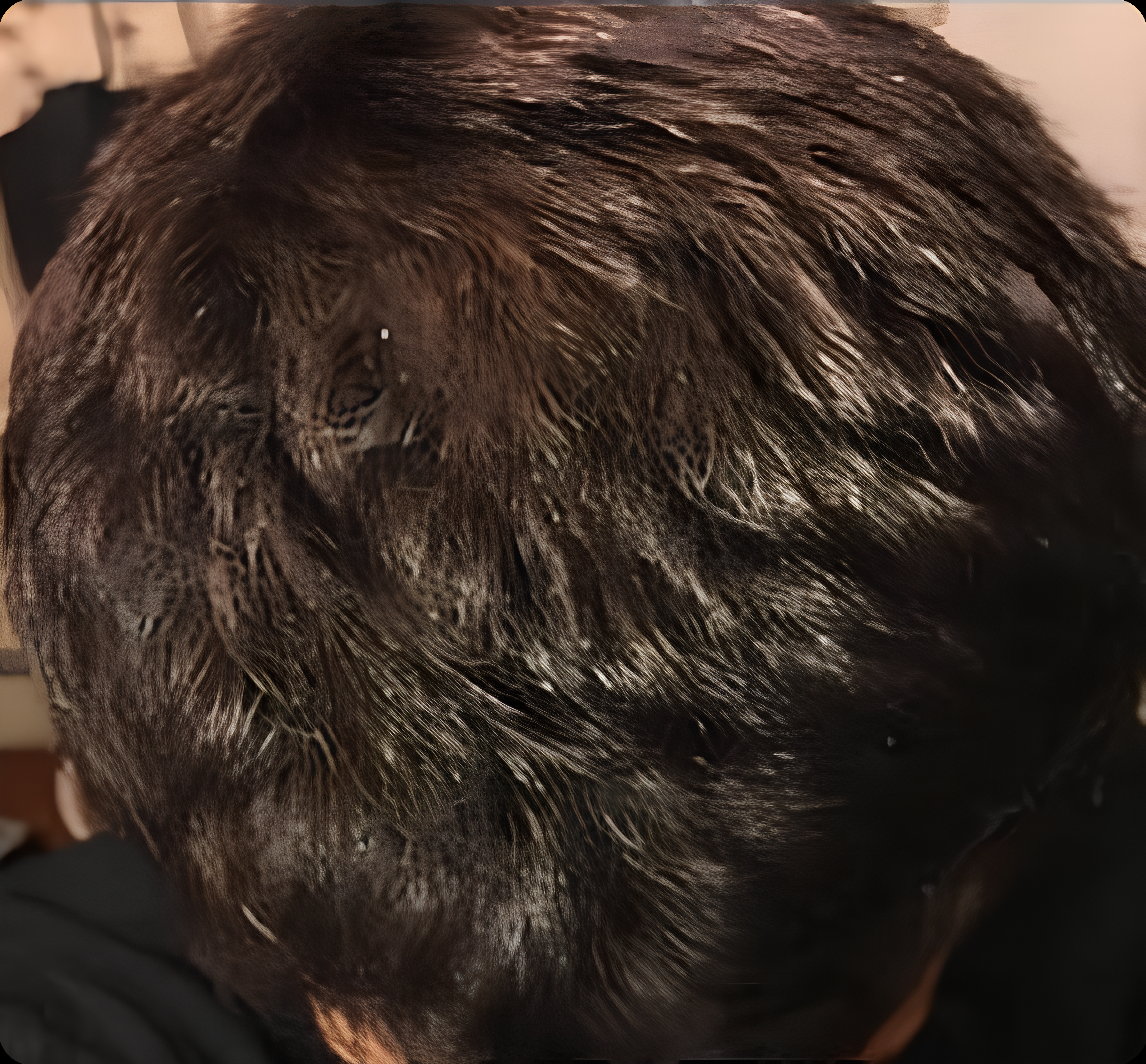

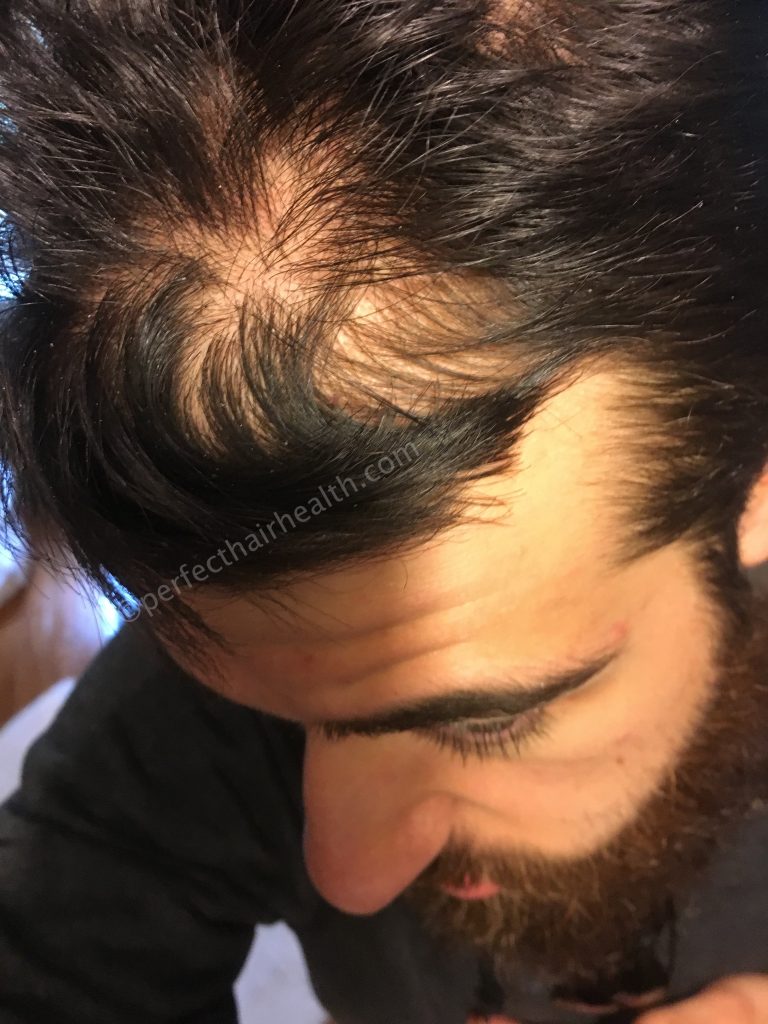
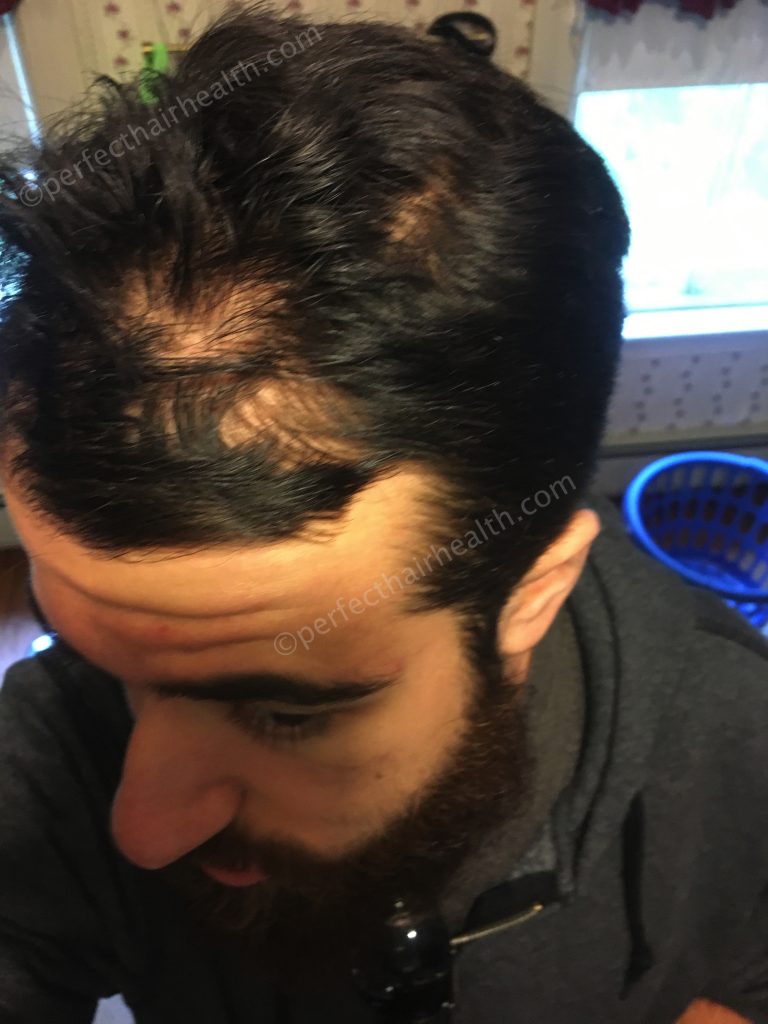
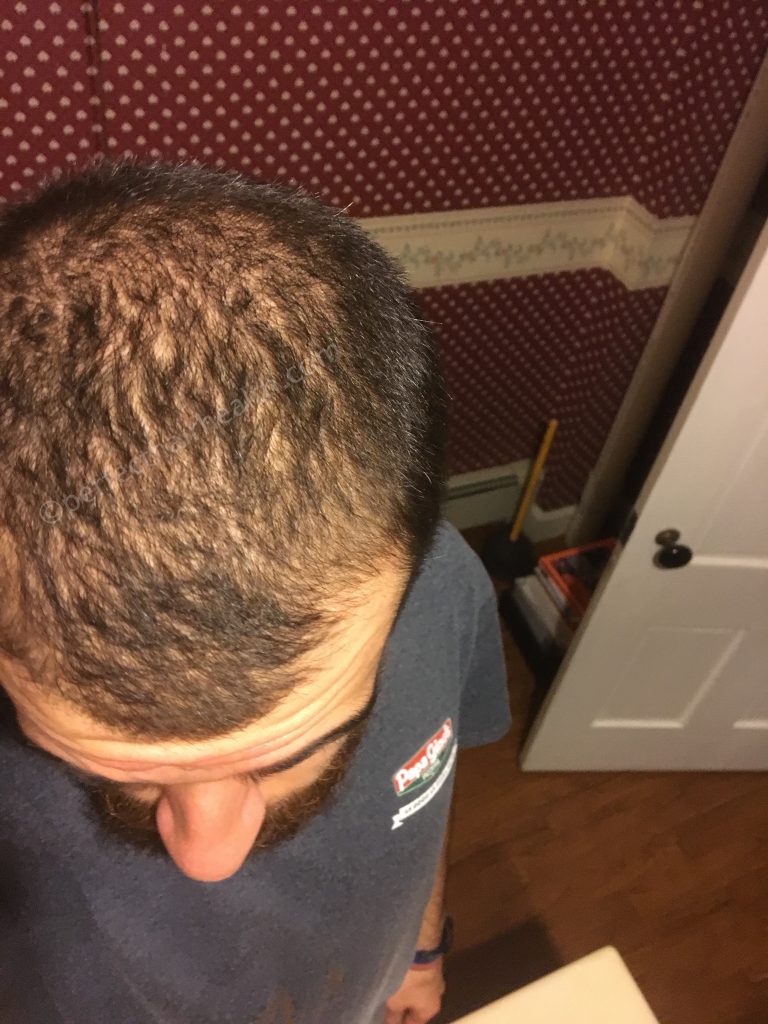
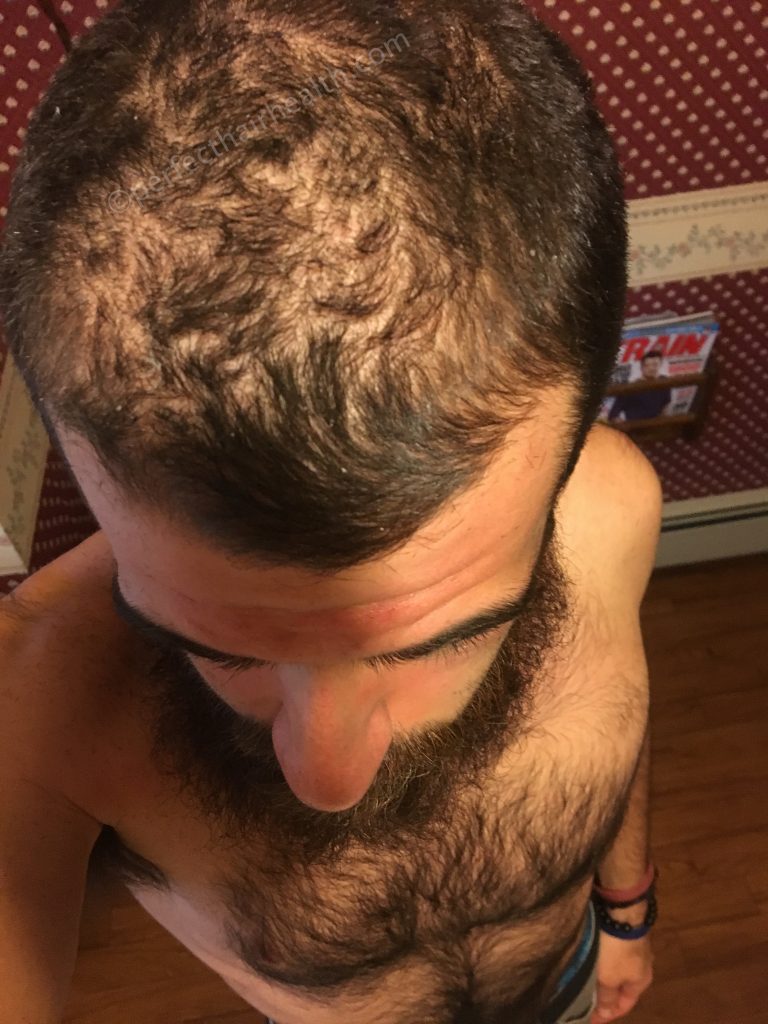



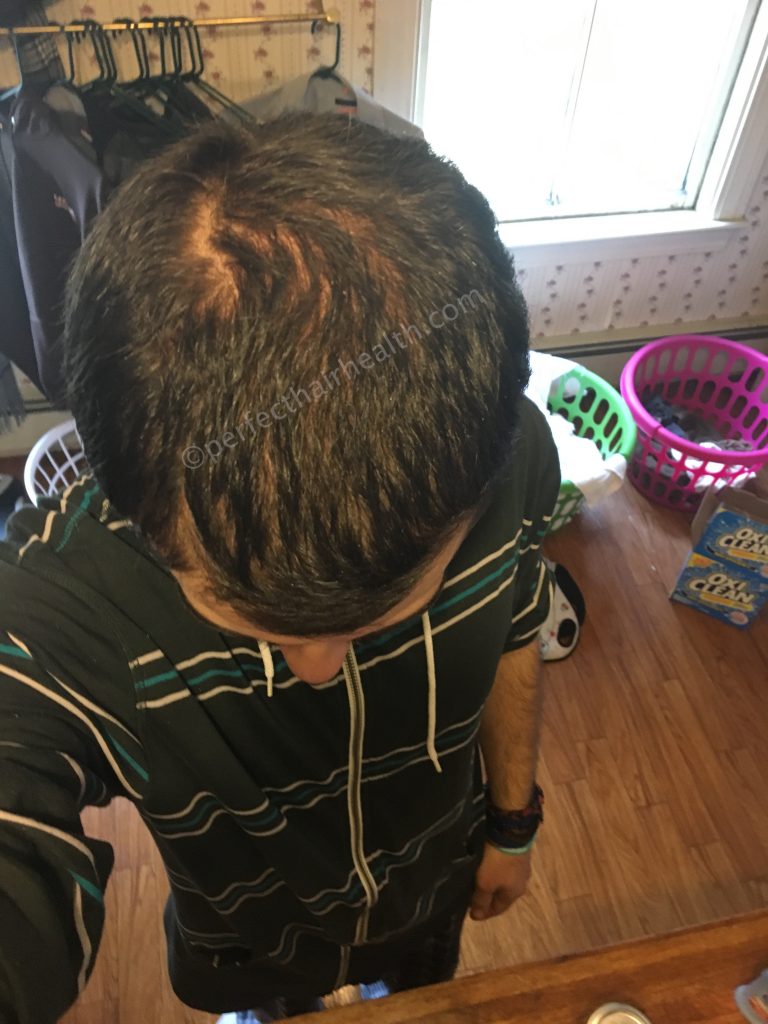

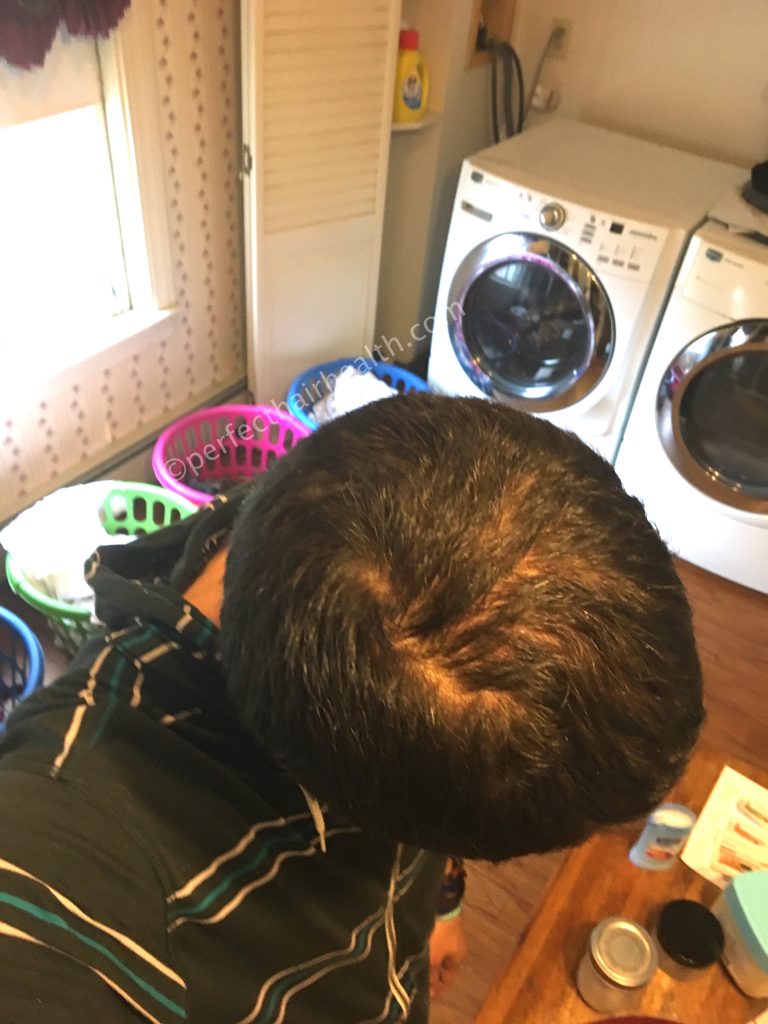
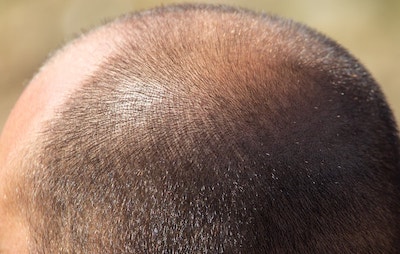 Example of male pattern hair loss
Example of male pattern hair loss